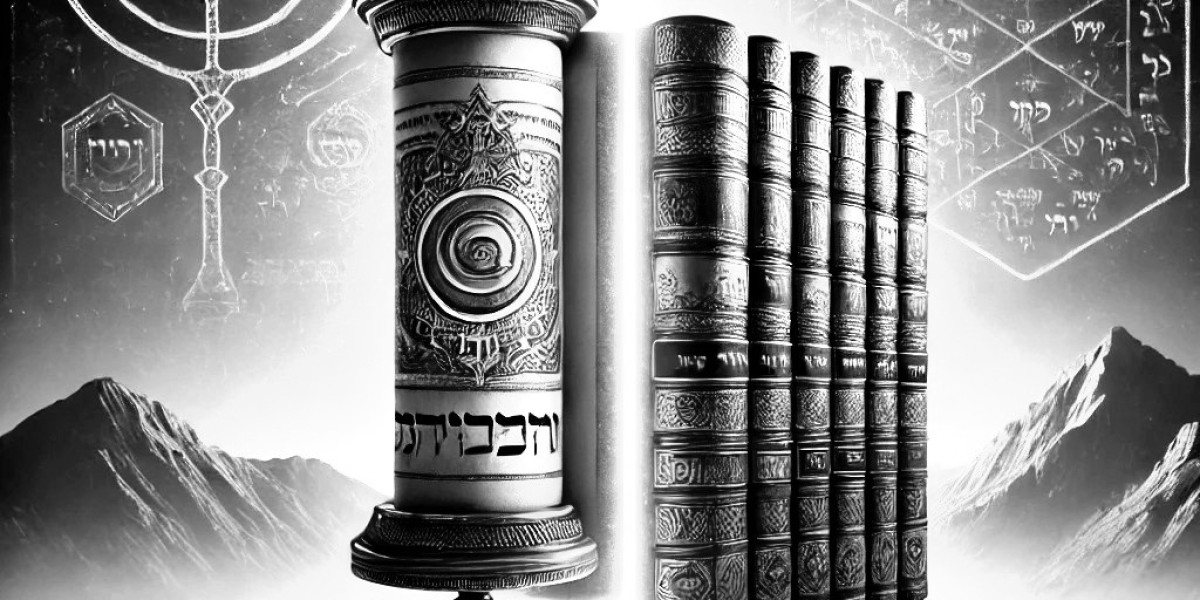Rabbinical Judaism, as practiced today, represents a divergence from the original ToRaH-centric faith established by Yah through MoSHeH. While the ToRaH remains the foundational text, the development of Rabbinical Judaism has introduced a body of traditions, interpretations, and laws that extend beyond the ToRaH's explicit commands. This article explores the historical, theological, and practical ways in which Rabbinical Judaism has strayed from the ToRaH.
Historical Context of Rabbinical Judaism
The roots of Rabbinical Judaism trace back to the Babylonian exile (circa 586 BCE) and the subsequent Second Temple period. During the exile, the absence of a centralized Temple forced a shift from sacrificial worship to ToRaH study and oral tradition. After the destruction of the Second Temple in 70 CE, Rabbinical Judaism emerged as the dominant form of Jewish practice, codified in texts like the Mishnah (circa 200 CE) and the Talmud (compiled between 300-500 CE).
The rabbis, seeking to adapt Judaism to a post-Temple reality, expanded the role of oral tradition, which they claimed was handed down alongside the written ToRaH. This oral tradition became the cornerstone of Rabbinical authority and gave rise to a legal framework and theology that often diverged from the plain meaning of the ToRaH.
Key Deviations from the ToRaH
1. The Oral ToRaH and Rabbinic Authority
The ToRaH explicitly warns against adding to or subtracting from its commandments (DeVaRiYM 4:2; 12:32). Despite this, Rabbinical Judaism asserts the existence of an "Oral ToRaH" given to MoSHeH at Sinai, which serves as an interpretive guide to the written text.
The Mishnah and Talmud, central texts of Rabbinical Judaism, often prioritize rabbinic interpretations over the plain meaning of the ToRaH. For example:
The ToRaH mandates wearing TziTziT (fringes) as a reminder of Yah’s commandments (BeMiD'BaR 15:38-40). Rabbinic law, however, adds detailed regulations regarding materials, length, and tying methods, many of which are not found in the ToRaH.
The ToRaH prescribes specific dietary laws (WaYiQRa 11), yet Rabbinic Judaism introduces additional stringencies, such as waiting periods between consuming meat and dairy, which have no basis in the ToRaH.
By elevating the Oral ToRaH, Rabbinical Judaism effectively creates a parallel authority, often diminishing the supremacy of the written ToRaH.
2. Shift in the Lineage System
The ToRaH establishes patrilineal descent as the basis for tribal and priestly identity (BeMiD'BaR 1:18; EzRa 2:59). Rabbinical Judaism, however, shifted to matrilineal descent, asserting that identity is determined by the mother. This change contradicts ToRaH precedent and reflects external cultural influences rather than ToRaH instruction.
3. The Role of the KaHaNiYM
In the ToRaH, the KaHaNiYM (priests) are set apart to perform specific duties in the MiSHKaN (Tabernacle) and later the Temple (WaYiQRa 10:8-11). Rabbinical Judaism diminishes the role of the KaHaNiYM by centralizing authority in the hands of rabbis and scholars rather than maintaining the priestly hierarchy established in the ToRaH.
For example:
Rabbinical Judaism permits anyone well-versed in HaLaKhaH (Jewish law) to lead prayers, while the ToRaH mandates the KaHaNiYM to bless the people and mediate on their behalf (BeMiD'BaR 6:22-27).
The ToRaH specifies that the KaHaNiYM must determine matters of ritual purity (WaYiQRa 13:2). Rabbinical Judaism, however, extends this role to rabbis without priestly lineage.
4. Focus on the Talmud Over the ToRaH
Rabbinical Judaism elevates the Talmud, a compendium of rabbinic debate and interpretation, to a status often exceeding that of the ToRaH in practical application. This shift has led to the codification of practices that contradict ToRaH law, such as:
The observance of rabbinically instituted festivals like Hanukkah, which, while historically significant, are not commanded in the ToRaH.
The replacement of biblical commands for SHaBBaT rest with detailed prohibitions (e.g., the 39 categories of work) that often obscure the spirit of the day as a delight and time for rest (YeSHaYaHu 58:13-14).
5. Talmudic Attitudes Toward Gentiles
The ToRaH emphasizes fair treatment and love for the stranger (GeR), commanding YaShaR’eL to treat them as natives and love them as themselves (WaYiQRa 19:34). Some Talmudic passages, however, exhibit discriminatory attitudes toward non-IBRiYM (Hebrews), creating a dichotomy between the ToRaH’s inclusive ethics and Rabbinical exclusivity.
Theological Implications
The emphasis on rabbinic authority and oral tradition reflects a theological departure from the ToRaH’s covenantal framework. The ToRaH presents Yah as the sole lawgiver and judge (SHeMoTh 20:1-3), with MoSHeH acting as His mediator. Rabbinical Judaism, by contrast, elevates the rabbinic court (Beit Din) to a quasi-divine authority.
This theological shift undermines the ToRaH’s insistence on direct accountability to Yah and the immutable nature of His commandments.
Conclusion
Rabbinical Judaism, while seeking to preserve IBRIY identity and practice in the face of historical challenges, has introduced significant deviations from the ToRaH. By elevating oral tradition, altering ToRaH-defined roles, and prioritizing rabbinic authority, Rabbinical Judaism has strayed from the covenantal purity established by Yah.
The challenge for YaShaR’eL today is to return to the ToRaH as the sole foundation of faith and practice, embracing its commandments as given without addition or subtraction. As the prophet MaLaKhi declared, "Remember the ToRaH of MoSHeH, My servant, which I commanded him in Horeb for all YaShaR’eL, with the statutes and judgments" (MaLaKhi 4:4). This return to ToRaH is not only a restoration of spiritual alignment but also a fulfillment of the covenantal relationship with Yah.















Nehkhemya Nahkhsh 8 w
Shalawam Myishpechka!
Might I Say: What A Command On The Topic (You Have). Wonderfully Written. Extraordinarily Composed.
Might I Add, However?
There Is A Significant Difference According To The Ab'ryi [Hebrew] Collective Memory About The Development of What You Designate Here As: Rabbinical Judaism (As It Is Synonymously Used Here With haTalmawad [ToRaH]).
Let Us Be Mindful, The Oral Tradition (Or, Atleast The Portion Elucidatinf History, And Those Hidden Through Other Rabbinical Interpretations) Never Belonged To The Rabbi's. It Was Always Apart of The DEEPER Trainings of The Temple, Performed By None Other Than haKawahen (HaKoHeN) of Ab'ryi haKehawana (ABRyiT HaKeHuNaH? Hiding Many Untold Treasures Within haMyishnah, And, Burying Even More Connecting Historical Gems Underuneath Within The Footnotes, And Surroundinf Decoratorive Borders, The Rhetoric of The Rabbinical Portion (Called The Gemara). With Final Destruction of The Ab'ryi Yashara'alyim (ABRyiT YiSRaeLIte), Northern Kingdom, To The Assyrian Empire At The Hands of The Then Mixed Multitude Dominated Southern Kingdom, haKehawana Suffered A Mortal Blow (Provided Shyilawah [ShiLoH]), And Other Kedawash (KeDoSH) Precincts Operating As haKawahenyim Main Operating Districts Were Alo Seized During That "Massive Relocation", of The Northern Kingdom.
What Was Left Was Southern: "Guardians". "Traditional Carriers", Who Sought To Capture Not Only The Letter As Written In Its Original Form (Called Sawapher Stem [SoFeR STeM]. Specifically Trained To Copy & Interpret haTawarah [ToRaH]), But Also The Spirit (Ending Up Elevating haSawapher Stem [HaSoFeR STeM]) To That of The Level of A Rab/Rav (A Master [But, This Must Be Distinctly Understood, That Rab/Rav Only Relates To A Title Related To The Letter of Tawarah... Originally! It Later Evolved To Self-Assume A Number of Other "Chief Characteristics...", To Also Encompass A Meaning Relating Mastery Not Over The "Letter" of Tawarah, But, The "Studies" of Tawarah, The "Interpretations" of Tawarah, The "Journey" Along The "Living", "Expanding", "Exploring" Tawarah! Appointing Themselves As Modern Authorities Over The "Disciplines" of Tawarah!]).
Hidden Within haTawarah, And, Connecting Texts Like haSepher Awa'Yasher [HaSeFeR V'YaSHeR] Are Spectacular Finds Recorded For Purposes of Reflection Along The Way. When Absent Rabbinical Interpretations (Maybe, A Call To Arms For Us To Begin A Discussion Connecting Us To the Task of Restoring The Original Texts), Bearing The Everlasting Light of TMH, Can Act As "A Lamp On The Path" To Redemption, And The Rite of Return.
Do Not Allow "Them" To Harden The Heart To Something So Much Already Apart of The Soul. I Believe The One of The First SECT. Known To Rebel Against Rabbinical Interpretation, And/OR Authority Were haQarayim (Also Known As "The Karaites" [i.e., "Those Who Follow The Scriptures"]. In Recollection, We Have To Truly Jog The Memory To What Amounts To "The Scriptures, Definatively, The United Way).
Let's Have The Discussion:
https://www.therite.simdif.com